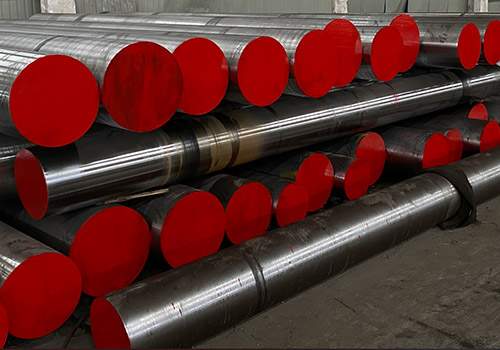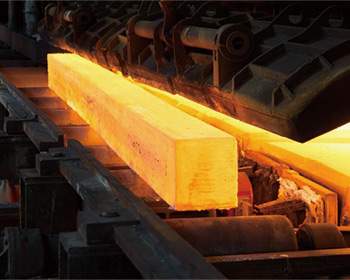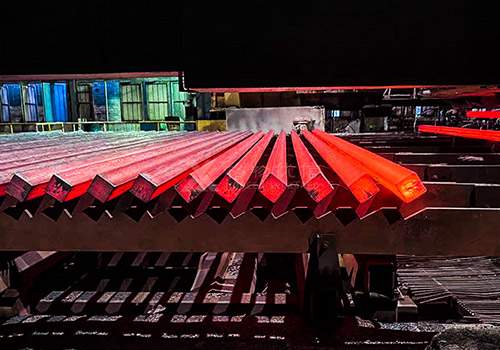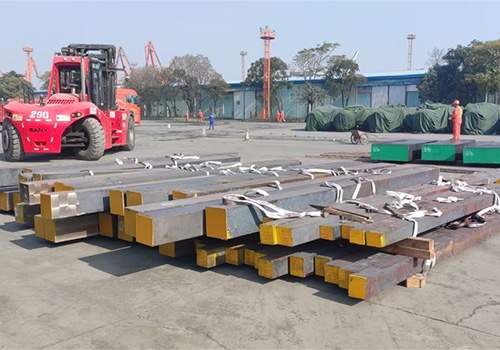
Understanding the Key 1020 Carbon Steel Properties
Introduction

1020 carbon steel is one of the most commonly used materials in various industrial applications due to its balanced composition, affordability, and versatility. This steel is often used in the manufacturing of components where strength, durability, and moderate resistance to wear are essential. Whether in automotive manufacturing, construction, or machinery fabrication, 1020 carbon steel plays a significant role in ensuring the performance and reliability of a wide range of products. In this guide, we will dive into the key 1020 carbon steel properties, its advantages, and some of the most common applications of this material.
Henan Jiyuan Iron and Steel (Group) Co., Ltd. was founded in 1958. It has rich experience in production and research and development. It provides you with one-stop steel services and welcomes consultations from customers around the world.
What is 1020 Carbon Steel?
1020 carbon steel is classified as a low-carbon steel. Its composition mainly consists of carbon and iron, with a carbon content of around 0.20%, which is why it is called 1020 steel. The “10” in the name indicates that it is a carbon steel, and the “20” represents the carbon content of the steel in hundredths of a percent. This steel is particularly popular in industries requiring a balance between strength and ductility, as it is neither too hard nor too soft.
Key 1020 Carbon Steel Properties
The key properties of 1020 carbon steel make it ideal for applications where moderate strength and good weldability are needed. Below are the key properties that define 1020 carbon steel:
Strength and Hardness
1020 carbon steel has a tensile strength of approximately 420 MPa (Megapascals) and a yield strength of 350 MPa. The hardness is usually measured between 120 to 180 Brinell hardness (HB), making it suitable for applications where a balance between toughness and hardness is required. Although it is not as hard as higher-carbon steels, its moderate hardness makes it ideal for many industrial uses.
Ductility and Malleability
One of the defining characteristics of 1020 carbon steel is its excellent ductility and malleability, which allows it to be easily formed and shaped without breaking. This makes it an ideal choice for processes such as stamping, forging, and bending. It is commonly used in the production of shafts, pins, and rods.
Weldability
1020 carbon steel is known for its excellent weldability, which makes it an attractive option for fabrication projects. It can be welded by various methods, including MIG, TIG, and arc welding, with minimal preheating. This makes it an excellent material for complex structures that require reliable joint integrity.
Machinability
Thanks to its relatively low carbon content, 1020 carbon steel is easy to machine. It can be effectively worked with tools such as drills, lathes, and mills. Its machinability is one of the main reasons for its use in manufacturing components that require precise tolerances.
Corrosion Resistance
While 1020 carbon steel does not have the same level of corrosion resistance as stainless steel, it performs adequately in environments where corrosion is not a significant concern. However, it is still recommended to apply a protective coating or galvanization if used in outdoor or marine environments.
Chemical Composition of 1020 Carbon Steel
The chemical composition of 1020 carbon steel plays a critical role in its mechanical properties. Below is a breakdown of its composition:
| Element | Percentage Range |
|---|---|
| Carbon (C) | 0.18% – 0.23% |
| Manganese (Mn) | 0.30% – 0.60% |
| Phosphorus (P) | ≤ 0.04% |
| Sulfur (S) | ≤ 0.05% |
| Iron (Fe) | Balance |
This composition gives 1020 steel its desirable properties such as strength, toughness, and ease of welding and machining.
Common Applications of 1020 Carbon Steel


Due to its unique combination of properties, 1020 carbon steel is used in a variety of industries. Below are some of the most common applications of 1020 steel:
Automotive Industry
1020 carbon steel is widely used in the automotive sector for components such as axles, gears, and shafts. Its ability to be easily forged and shaped into various forms makes it an ideal choice for these high-stress applications.
Construction and Infrastructure
The construction industry utilizes 1020 carbon steel for structural components like beams, columns, and frames. Its weldability allows for the creation of durable, high-strength structures.
Machinery and Equipment
Due to its machinability, 1020 carbon steel is commonly used for manufacturing machine parts, including gears, bolts, and studs. The material’s ability to resist wear and tear ensures the longevity of the machinery.
Pipes and Tubes
1020 carbon steel is often used in the manufacturing of pipes and tubes for industrial applications. These pipes are used in fluid transport systems, oil and gas industries, and more.
Fasteners and Bolts
The strength and machinability of 1020 steel make it a great choice for manufacturing fasteners and bolts that are integral to the assembly of machinery, vehicles, and structures.
Advantages of 1020 Carbon Steel

The advantages of 1020 carbon steel make it a versatile material in various applications. Here are some of its key advantages:
Affordable Cost
Compared to higher-carbon steels, 1020 carbon steel is relatively affordable, making it a cost-effective choice for manufacturers who need to balance performance with price.
Versatility
1020 carbon steel is used in a wide range of applications, from the automotive industry to construction. Its versatility is one of the reasons for its widespread use in manufacturing.
Good Strength-to-Weight Ratio
Although it is not as strong as some high-carbon steels, its balance of strength and weight makes it suitable for many applications where load-bearing capacity is required without excessive weight.
Conclusion
1020 carbon steel is a popular material known for its balanced properties, making it suitable for a wide range of applications. Its strength, machinability, weldability, and affordability make it an ideal choice for industries such as automotive, construction, and manufacturing. Whether you are designing structural components or manufacturing machine parts, understanding 1020 carbon steel properties can help you make an informed decision about its use in your projects.
FAQ
What is the difference between 1020 and 1045 carbon steel?
The main difference between 1020 and 1045 carbon steel lies in their carbon content. 1020 carbon steel has a carbon content of 0.20%, whereas 1045 carbon steel has a higher carbon content of 0.45%. This means that 1045 steel is stronger and harder but less ductile than 1020 steel.
Can 1020 carbon steel be heat treated?
Yes, 1020 carbon steel can be heat treated to improve its hardness and strength. It can undergo processes like annealing or carburizing, depending on the specific requirements for the application.
Is 1020 carbon steel rust-resistant?
1020 carbon steel is not inherently rust-resistant. It will corrode over time when exposed to moisture and oxygen unless it is coated or treated for corrosion resistance. It is advisable to apply a protective coating or galvanization for outdoor applications.
Is 1020 carbon steel suitable for high-temperature environments?
1020 carbon steel is generally suitable for moderate temperature environments. It may not perform well under extreme high-temperature conditions, where high-alloy steels or stainless steel would be a better choice.
How is 1020 carbon steel fabricated?
1020 carbon steel is relatively easy to fabricate using standard machining processes such as welding, cutting, drilling, and turning. It can be cold-worked or hot-worked, making it adaptable to various fabrication methods.






